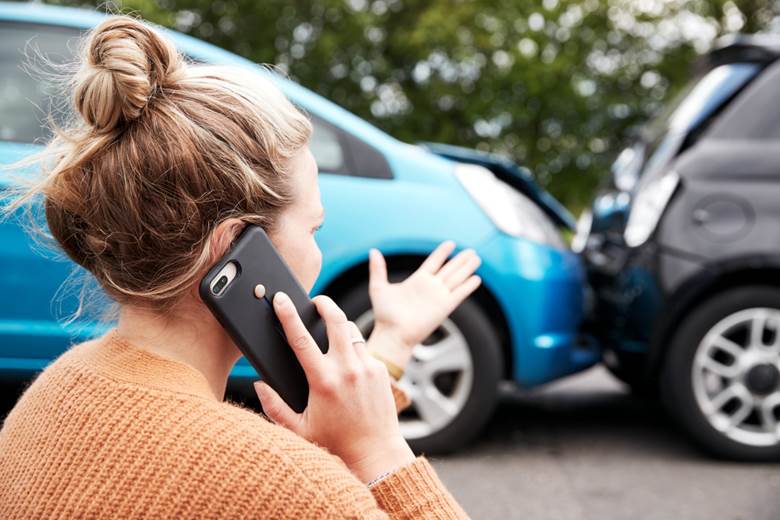
The unexpected happens on the road every day. Someone cuts you off and it’s enough to cause a minor fender bender. Or, traffic slows to a crawl, and two vehicles unavoidably rear-end each other.
Unfortunately, no clear objective method exists to determine liability in ordinary car accidents. However, determining fault isn’t entirely subjective, and a few objective road signs point to a fault.
Fear not if you find yourself embroiled in an auto accident with another driver and unable to determine who’s liable. Follow this guide for answers about how fault gets determined in motor vehicle accidents and how to get compensated.
What Is Fault in Car Accidents?
To prove fault in car accident, a variety of factors are taken into consideration. Generally speaking, the driver whose careless or reckless actions contributed to the accident is considered at fault.
Negligence or failure to take the necessary precautions may also contribute to a driver being blamed for the collision. It’s important for any driver involved in a motor vehicle accident to document the exact circumstances of the event.,
This can be important in determining fault. Examples of these circumstances include:
- weather conditions
- road obstruction
- speed limits
- the visibility of the other driver
In some cases, legal action may be needed to determine who is at fault. This is dependent on the state’s particular laws. The extent of any compensation to the victim of an accident can also depend on who is found to be at fault.
It is whether or not protection is given by insurance companies. The following is a list of accident scenarios along with information on how fault, liability, and claims are handled in each:
100 Percent at Fault
The percentage of fault assigned to each party is generally based on the degree of each party’s negligence. It is not necessarily the case that one party will be 100 percent at fault, or that fault will even be assigned among all parties involved.
There are situations where one party is proven to have been 100 percent responsible for the accident, such as when a driver had been drinking or otherwise driving erratically. The other party may be granted a full recovery.
However, it is more likely that fault will be distributed among parties, with each party being assigned a percentage of fault based on their degree of negligence.
51 Percent at Fault
Fault in car accidents can be determined as a percentage, with the at-fault party being assigned the majority of the blame. When a car accident occurs, 51% of the fault may be attributed to one of the parties involved.
This means that one driver is more accurately responsible for the accident than the other. This 51 percent at-fault rule in car accident cases is used to help determine who is more to blame from the following:
- the estimations
- statements
- evidence provided by police
- witnesses and drivers.
The other 49 percent of the fault may then be attributed to the other party. In some cases, though, both parties may be held to an equal level of fault, leading to no compensation for either.
No matter the result, the 51 percent of fault rule is used to help determine who is to blame for an accident.
50/50 Percent at Fault
When discussing who is at fault in a car accident, it is common to assign percentages of fault to both drivers involved. In some cases, both drivers may be found to be 50/50 percent at fault for the accident.
This means that both drivers negligently caused the accident. Thus, both are responsible for the damages caused by the accident. This situation can be especially complicated when there is significant damage caused by the accident.
The insurers must assess the damages and the fault of the drivers involved. It is important to note that a 5050 split on fault is rare, and most of the time one driver is found to be more at fault than the other.
Ultimately, the responsibility of assigning a percentage of fault is up to the individual insurers.
Ways in Determining Fault in Car Crash
In determining fault in car accidents, the laws of negligence are typically used. Negligence is the failure to take reasonable care in a situation that a reasonable person would have taken.
In car accidents, the law typically requires that drivers take reasonable actions to prevent foreseeable accidents. Ways to determine fault generally involve:
- looking at the witnesses
- collecting evidence
The police officers who responded to the scene can provide information regarding the fault. In addition, a jury may be used to determine fault if the parties cannot agree on who was responsible for the crash.
Also, an expert such as an engineer or an accident reconstructionist may be consulted. Depending on the jurisdiction, other factors of the car crash such as the following list below may also be considered in determining fault:
- speed
- distracted
- driving
- disobeying traffic laws
- weather conditions
Finally, the list below is often the parties involved in deciding fault. Here are the three:
The Involved Drivers
When determining fault in a car crash, the parties involved typically consist of the drivers who were involved in the accident. The drivers are the primary point of reference for the analysis of the accident.
In specific cases, lawyers, experts, and the court might be involved in determining the fault of the drivers involved.
The Police Report
The Police Report is a valuable tool in determining fault in a car crash. The report includes details about the accident, such as:
- vehicle make and model
- speed of both vehicles
- road conditions
- any emergency responses
- witness statements
The conclusions made by the police officers who investigated the accident are also included. Involved parties may review the police report to piece together the sequence of events, allowing them to identify who is at fault and how any civil or criminal penalties should be determined.
Insurance Companies
Insurance companies play a key role in determining fault in car crashes. They review the facts related to the crash and determine which party is at fault.
They assess the severity of the crash, the amount of property damage, and any injuries that may have been caused by the accident. Insurance companies use the law to determine whether the vehicle owner or the other driver is legally responsible for the damages associated with the crash.
What to Do if You Can’t Determine the Fault in Car Accident?
Liability in a car accident can be difficult to determine, especially when neither party admits to a fault. In these cases, it’s important to obtain any and all evidence from the scene that can help to identify additional responsible parties or prove fault.
This could include consulting witnesses, checking weather reports, and reviewing other nearby surveillance footage. Ultimately, if the fault remains unclear after collecting all of this information, you may need to resort to mediation or arbitration so that a neutral third party can assess the evidence and determine responsibility.
The outcomes of these proceedings can then be used to justify an insurance settlement or court case. To help you determine whose at fault, you can check out this car accident lawyer to help you win your case.
What Is a No-Fault in Car Accidents?
A no-fault car accident involves any type of accident in which no particular party can be held responsible for the collision. Typically, no-fault car accidents involve two or more drivers who collide due to a lack of proper or safe driving on either side.
Examples of no-fault car accidents include one where there may be:
- sudden change in traffic conditions
- sudden weather change
- mechanical problems with one or more vehicles
- failure to obey road rules
This type of accident allows both drivers to file insurance claims and receive compensation without having to prove the other driver was liable.
This type of claim is beneficial for the driver because they may not have to endure the lengthy process of a lawsuit to get compensation, however, they will bared to some of the expenses.
List of No-Fault State
No-fault states are those in which an individual or company is held liable without having to prove fault. These types of states implement insurance systems where the insurance companies of the driver involved in an accident must pay for the damages regardless of who was at fault. The list of no-fault states includes;
- Florida
- Hawaii
- Kansas
- Kentucky
- Massachusetts
- Michigan
- Minnesota
- New Jersey
- New York
- North Dakota
- Pennsylvania
- Utah
These states have the advantage of making it easier for accident victims to obtain compensation for bodily injury expenses. Nonetheless, living in a no-fault state does not mean that someone waives their rights to sue the other driver and may do so in severe circumstances. Lastly, some states, such as Kentucky and Michigan, have hybrid systems that are partly fault, and partly no-fault.
Determining Fault in Motor Vehicle Accidents
In conclusion, determining fault in motor vehicle accidents requires an analysis of the facts and evidence. Factors such as traffic laws, the behavior of the drivers, and road conditions all play a role in determining fault.
If you are involved in an auto accident you should consult an attorney to help determine fault.
Did you find this article helpful? You can check out our website for more awesome content like this.





